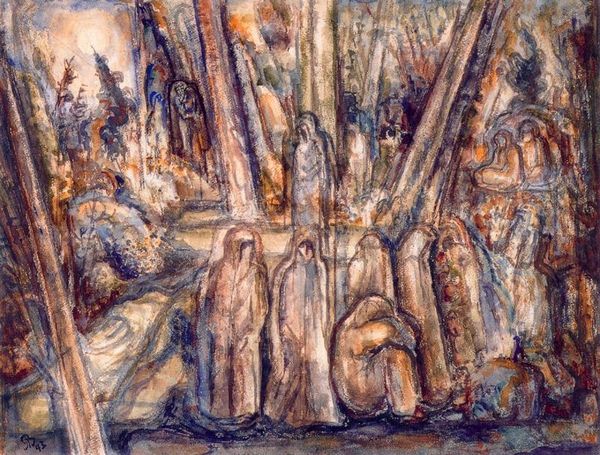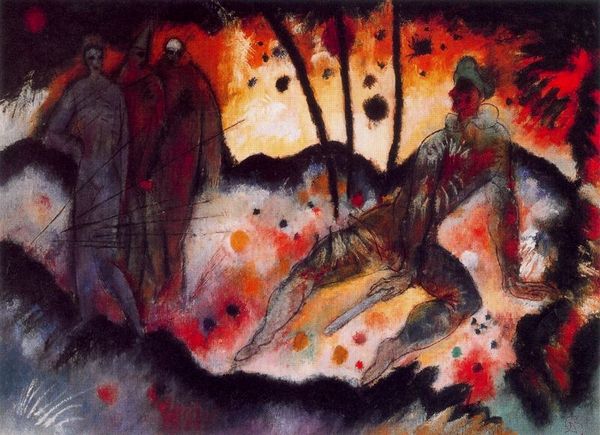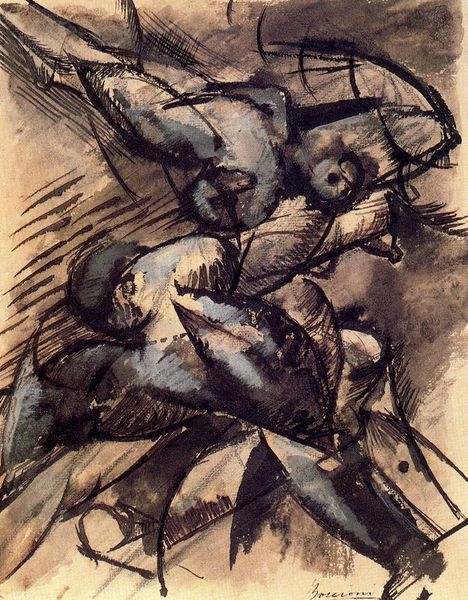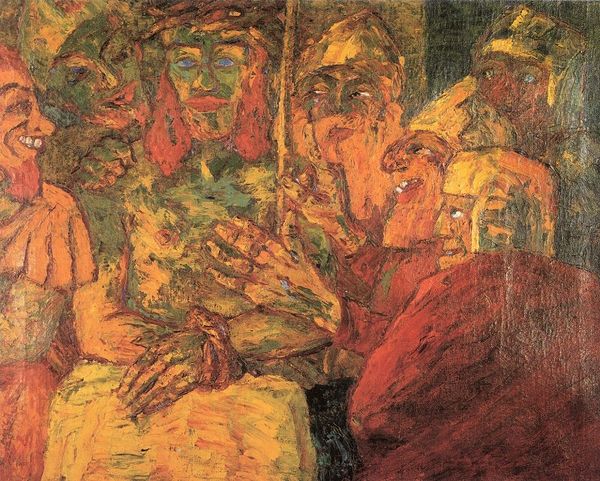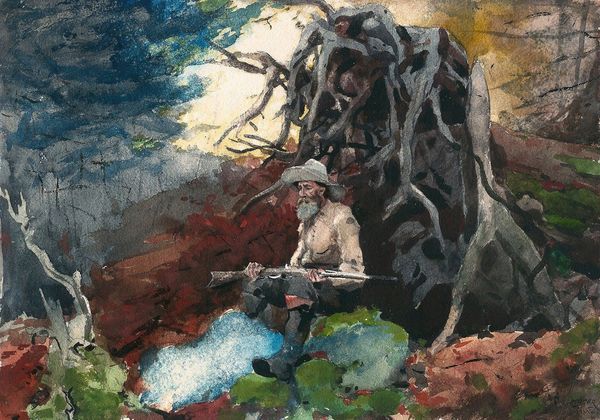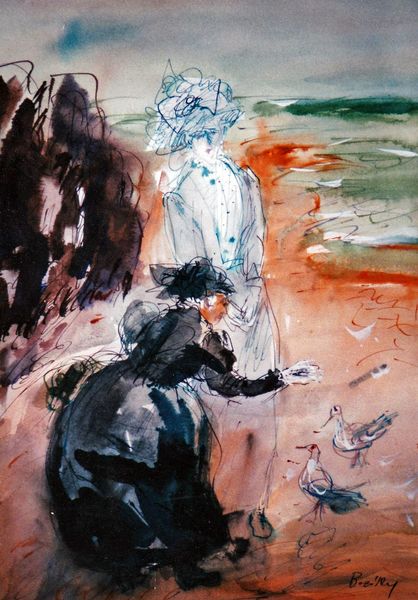
oil-paint
#
portrait
#
impressionism
#
oil-paint
#
charcoal drawing
#
possibly oil pastel
#
charcoal art
#
oil painting
#
group-portraits
#
genre-painting
#
watercolor
Copyright: Public domain
Curator: Edgar Degas's "Musicians in the Orchestra," dating from around 1870, presents a rather intriguing visual experience. What strikes you initially about its aesthetic? Editor: It's a study in browns and creams, all muted and earthy. The composition feels unconventional; the musicians seem caught mid-performance, figures cropped and slightly blurred, the perspective off-kilter. There's a raw immediacy about it. Curator: Degas, rooted in the burgeoning Impressionist movement, was quite invested in capturing fleeting moments in the day-to-day experiences of Parisian life. It's a fascinating intersection of high culture—the orchestra—and the labor involved in producing that culture. Notice the visible brushstrokes in this oil painting. Editor: Indeed. And the stark contrast between the sharply defined portrait of the bassoonist and the almost ghostlike figures in the background demands attention. What commentary can we offer about the material properties of Degas’ paintings in context of 19th-century modes of painting? Curator: He pushes against academic traditions through subject matter and style, emphasizing both individual portraits within a group, and exploring novel pictorial structure of his paintings. His choice to focus on this particular section of the orchestra—the "working-class" musicians rather than the star performers—reflects a broader interest in depicting the lived realities of a changing society, even on these well-esteemed stages. Editor: The repeated verticals of the bows and instruments create a compelling visual rhythm. While on one hand, the materiality feels unfinished, especially near the back of the pictorial field, I notice how that almost textural handling also enhances the sense of movement and the ephemerality of the music itself. Curator: I concur. Perhaps it encapsulates Degas's endeavor to bring art and life, in all its grit and glory, together into the same artistic canvas. The work highlights labor through its impressionistic execution in an artistic context. Editor: Yes, in his distinctive formal approach, it pushes our boundaries to see and hear differently. It leaves one contemplative, about a quickly vanishing note on a musical score.
Comments
No comments
Be the first to comment and join the conversation on the ultimate creative platform.

